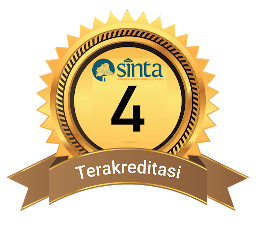Chem-Rox Games As A Learning Media For The Concept of Reduction and Oxidation Reactions Material to Increase Students Learning Motivation
DOI:
10.29303/cep.v4i1.2397Published:
2021-05-29Issue:
Vol. 4 No. 1 (2021): Edisi MeiArticles
Downloads
Additional Files
How to Cite
Abstract
The development of technology can be used to improve the quality of learning, for example the use of computers as learning media. This study aims to measure the effectiveness of Chem-Rox games as learning media for the concept of redoxÃÂ in terms of learning outcomes and student motivation. This study used one group pretest posttest design method. The subjects in the study were conducted on class X students of MA Al-Arifin Probolinggo. Before learning was carried out pretest and after learning was given posttest. The results of the data obtained were analyzed quantitatively. The results of this study indicate that the n-gain obtained is 0.71-1 in the high category and the t test is obtained by the tvalue of 11.266 > ttable 2.093 and the increase in students learning motivation as seen from the tvalue 21.838 > ttable 2.093. From these data it can be stated that there is a significant difference between the average learning motivation of students before and after learning using the Chem-Rox game. Thus can be concluded that the Chem-Rox game is effectively used as a learning media based on increasing learning outcomes and increasing learning motivation of students on the concept of redox material.References
Rizky, Ayu., et.al. (2018). Faktor-Faktor Penyebab Kesulitan Belajar Siswa dan Upaya-Upaya untuk Mengatasinya. Jurnal Bening, 2 (2), 47-56.
Hidayah, R., & Rahmanah, A. (2019). Kepraktisan Permainan Simple Nomic Berbasis Android sebagai Media Pembelajaran pada Materi Tata Nama Senyawa Anorganik Sederhana. EduChemia, 4 (2), 195-203.
Andrianie, Dwi., et.al. (2018) Representasi Kimia Untuk Mereduksi Miskonsepsi siswa pada Materi Redoks Melalui Penerapan Model Pembelajaran Inkuiri Terbimbing Berbantuan LKS. Chemistry in Education, 7 (2), 69-76.
Switri, E,. (2019). Teknologi dan Media Pendidikan dalam Pembelajaran. Ayra Luna. Jakarta.
Safitria, N. L and Kusumawati D. (2020). Development Interactive Multimedia Using 3D Virtual Modelling on Intermolecular Forces Matter. International Journal of Chemistry Education Research. 4, (1) 17-25 (2020).
Chang-Hsin, L., & Ju-Ling, S. (2018). Analysing Group Dynamics of a Digital Game-based Adventure Education Course. Educational Technology & Society, 21 (4), 51-63.
Cheng, M.-T., Lin, Y.-W., She, H. C., & Kuo, P. C. (2016). Is immersion of any value? Whether, and to what extent, game immersion experience during serious gaming effects science learning. British Journal of Educational Technology, 48(2), 246- 263.
Ke, F. (2016). Designing and integrating purposeful learning in game play: A Systematic review. Educational Technology Research & Development, 64 (2), 219-244.
Wildana, M. N., Kasmui, & Nuryanto. (2020). Keefektifan Desain Media Role Playing Games Berbasis Android Pada Materi Redoks Dan Tata Nama Senyawa. Jurnal Inovasi Pendidikan Kimia, 14 (1), 2009-2018.
Sugiyono. (2013). Metode Penelitian Kuantitatif Kualitatif dan R&D. Bandung: Alfabeta.
Hake, R.R., (1998). Interactive engagement v.s traditional methods: six- thousand student survey of mechanics test data for introductory physics courses. American Journal of Physics, 66 (1), 64-74.
Syamsudin and Deni S. (2019). Buku Ajar Mata Kuliah Statistik II. Jakarta:Qiara Media.
Adani, T. and Lutfi, A. (2016). Pengembangan Media Permainan Chem-Run Pada Materi Pokok Struktur Atom Untuk SMA Kelas X. UNESA Journal of Chemical Education, 5(3), 358-367.
Hidayah, Rusly. et. al. (2017). Permainan ââ¬ÅKimia Kotak Katikââ¬Â sebagai Media Pembelajaran pada Materi Sistem Periodik Unsur. Jurnal Tadris Kimiya, 2 (1), 91-96.
Ibanez, M. B., Angela D. S., and Carlos D. K. (2014). Gamification for Engaging Computer Science Students in Learning Activities: A Case Study. IEEE Transactions on Learning Technologies, 7(3), 291-301.
Sutarto. (2017). Teori Kognitif dan Implikasinya dalam Pembelajaran. Islamic Counseling, 1 (2), 1-26.
Lutfi, Achmad, and Anggraini, N. (2019). Minat Belajardan Keberhasilan Belajar Partikel Penyusun Atom Dengan Media Pembelajaran Permainan Chem Man. Jurnal Pembelajaran Kimia, 4 (1), 39-50.
Chen, et. al. (2018). How Competition in a Game-Based Science Learning Enviroment Influences Students Learning Achievement, Flow Experience, and Learning Behaviorial Patterns. Educational Technology & Society, 21 (2), 164-176.
Author Biographies
Ismawati Kusuma Dewi, Universitas Negeri Surabaya
Achmad Lutfi, Universitas Negeri Surabaya
License
Authors who publish with Chemistry Education Practice agree to the following terms:
- Authors retain copyright and grant the journal right of first publication with the work simultaneously licensed under a Creative Commons Attribution License 4.0 International License (CC-BY-SA License). This license allows authors to use all articles, data sets, graphics, and appendices in data mining applications, search engines, web sites, blogs, and other platforms by providing an appropriate reference. The journal allows the author(s) to hold the copyright without restrictions and will retain publishing rights without restrictions.
- Authors are able to enter into separate, additional contractual arrangements for the non-exclusive distribution of the journal's published version of the work (e.g., post it to an institutional repository or publish it in a book), with an acknowledgement of its initial publication in Chemistry Education Practice.
- Authors are permitted and encouraged to post their work online (e.g., in institutional repositories or on their website) prior to and during the submission process, as it can lead to productive exchanges, as well as earlier and greater citation of published work (See The Effect of Open Access).






